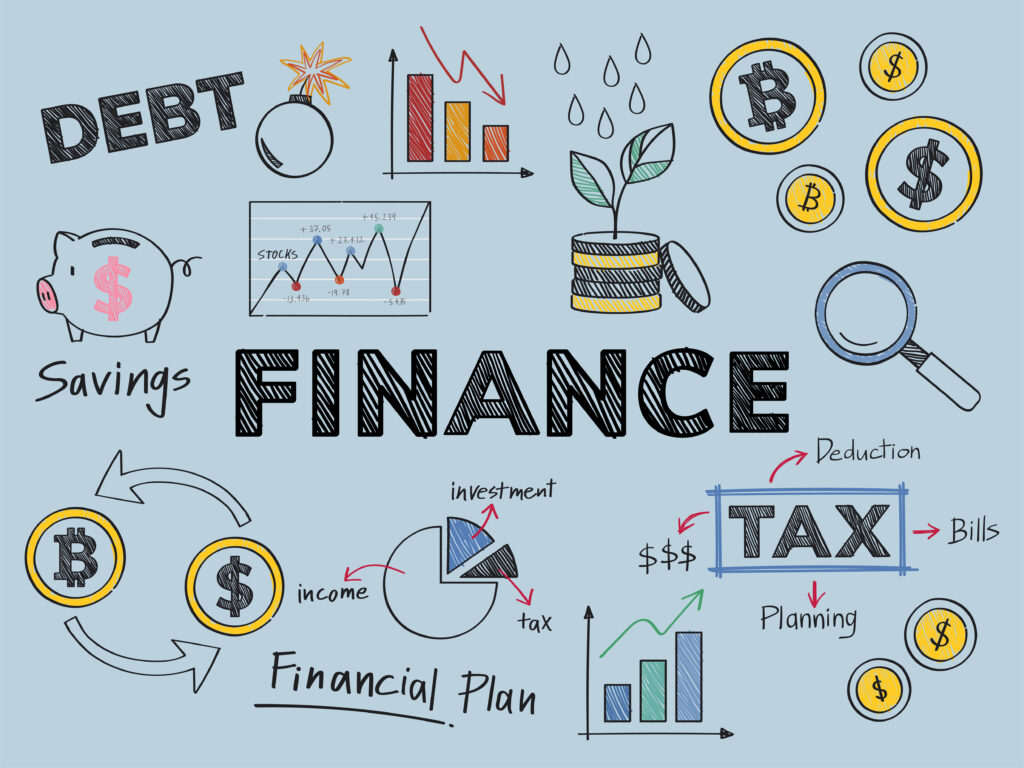Creating a Financial Model, even for a startup business, is very important to build a strong foundation around the financial identity of the company. Financial models for startups and existing companies underpin major business and financial decisions and are one of the most important tools for business planning.
Financial Models Explored.
When you’re trying to launch a new business, the last thing you want to worry about is accounting. After all, launching a new company is hard enough without learning a whole new set of skills. At some point, though, you’ll need to build a financial model for your business to see whether it has the potential to be profitable.
A financial model will show you how much capital you’ll need, your ongoing costs, and whether the firm has a positive cash flow. It sounds scary but isn’t as complicated as it might seem. This article looks at exactly what a financial model is, why it’s important, and how to build one yourself. If you’re an accountant reading this – fear not! We also have a handy interactive model with video tutorials that you can use with all your clients in the future.
What is a Financial Model?
A financial model is a simplified version of your company’s finances. It helps you see whether the company has the potential to be profitable or not. It will tell you exactly how much capital you’ll need to get the business off the ground, your ongoing costs, and whether the firm has a positive cash flow.
These models are built based on thoroughly understanding your company’s projected sales, expenses, and cash flows. As an integral part of financial modelling, financial models are highly customisable and can be used to examine various scenarios related to your business, such as how much additional capital you’ll need to grow your company or how much profit you’ll have after certain costs have been paid.

Why build a Financial Model?
The main reason to build a financial model for your business is so that you can see whether it has the potential to be profitable or not. You can also use it to see your ongoing costs and when you’ll break even. This will help you make sure that the business you’re launching will be able to sustain itself.
It can be useful to build a financial model even if you’re not planning to raise capital for your business. This is because it will allow you to see whether your company has the potential to be profitable or not. This will help you determine whether you should continue with your current business idea or pivot to something else.
How to Build a Financial Model for Your Business
Building a financial model for your business is the process of first understanding your company’s projected sales, expenses, and cash flows. Next, you’ll plug those numbers into a spreadsheet or financial model with formulas to calculate everything automatically.
You’ll then use the model to examine a variety of different scenarios. You can examine how much additional capital you’ll need to expand your business or how much profit you’ll have after certain costs have been paid. A financial model is a simplified version of the finances of a company. It helps you see whether the company has the potential to be profitable or not.
Check out this article that further examines the concept.
The Basics of a Financial Model
There are many different types of financial models. The most common ones are the cash flow statement, the profit and loss statement (P&L), a break-even analysis, and a financial projection. There is no single way to build a financial model. However, there are some core principles that you should keep in mind.
Most importantly, ensure that your model is simple and easy to understand. Your model doesn’t have to be 100% accurate. It’s better if it isn’t because you don’t want to build in any unrealistic assumptions. Once you’ve built a financial model for your business, you can tweak the numbers in the future to see what would happen if you changed your cost of goods sold (COGS) percentage or your sales forecast. You’ll also be able to quickly see if any new ideas you have would be profitable.
Here are 7 of the most important reasons you should prepare a Financial Model for your business.
- Financial Models are created as an attractive financial representation of the company’s monetary situation. To attract potential investors, you must produce the best possible [and realistic] version of a financial model that will convey your financial forecasts accordingly.
- The main purpose of Financial Models is to plan the future of the company’s finances. It allows for more informed and better financial decisions within the company.
- Financial Models play an important role in Capital Budgeting. It mainly helps to determine the capital structure or cost of capital and create an analysis for resource allotment. For this reason, it offers a detailed review of the debt/equity system and the returns expected by investors.
- Another use of Financial Models is to optimise the company’s financial performance. The most obvious use of Financial Models is to optimise the day-to-day operations of a firm. Companies use these Financial Models to determine how they can invest their resources and capital most profitably.
- Financial Models are important for people working with investors, mergers, acquisitions, company executives, and related stakeholders. The key explanation for why it is so important is that millions of Rands are online with these big business transactions. Most of the decision-making comes down to the viability and believability of the Financial Models.
- Companies extending credit to Startups and Existing Companies bear many risks if not properly assessed. Hence, they need to determine if the third party is worth lending credit to can mostly only be done through a comprehensive analysis of the Financial Models.
- Not all startups have financing, so creating Financial Models is the best tool to attract potential investors.

- Sales Forecast ― Create a sales projection throughout the period (whether for short-term or long-term planning).
- Expenses Budget ― Create an expense budget plan to understand better the cost you will expend to make the sales forecast plausible and feasible. Remembering all those potential “hidden charges” like staff training, marketing, and PR is important. It is always wise to allow for/add a 3-5% contingency for any unexpected expenses.
- Cash Flow Planning ― Develop a cash flow statement to track the cash in and out of your business operations, partly basing it on your sales forecasts, balance sheet, and other assumptions.
- Income Projections ― The so-called revenue forecast (profit and loss statement) for the upcoming years using the sales forecast, expense forecast, and cash flow projection.
- Balance Sheet Projections ― Deal with assets and liabilities that weren’t included in your income projection to forecast the net worth of your business at the end of the fiscal year, especially for startups.
- Breakeven Analysis ― Conduct a break-even analysis after mapping out all the projections to assess if the business’s expenses match the sales or service volume. The analysis measures when the business reaches the break-even point, which is an important key for potential investors if the business is financially feasible and a good investment.
- Calculation of Funding Required ― Preparing and showing the company’s required funding is helpful if the management seeks to present this to prospective investors or any financial lending agencies.
- IRR Calculation ― Businesses use this to calculate which discount rate compares the initial capital expenditure cost to the present value of expected after-tax cash flows. That is why IRR is one central component of capital budgeting and corporate finance.
- Exit Scenario and Multiple ― You should not forget to prepare an Entry and Exit Valuation. You must carefully calculate an attractive Exit Scenario and Multiple to show prospective investors and compel them to invest their money in your company.
- Shareholder Structure ― Lastly, you need to show the existing Shareholder Structure and the percentage of equity and financing. This is valuable data for prospective investors to assess the percentage share of the company’s equity.
Once you are ready, you need to face the Dragon’s Den, and these are 10 Critical Questions that Investors Will Ask You.
Designing Financial Models may seem like a process that is simple and easy, but of course, the process is more than it seems. A lot of time needed to be set aside to build viable Financial Models. You need an acceptable amount of industry know-how to ensure the Financial Models are reliable and work the way they should. Contact Dr Thommie Burger, Founder of JTB Consulting, today. He is a Certified Financial Modelling and Valuation Analyst (FMVA) ®.







